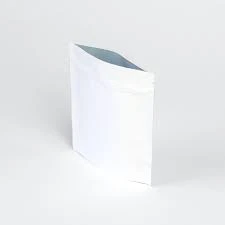- Afrikaans
- Albanian
- Amharic
- Arabic
- Armenian
- Azerbaijani
- Basque
- Belarusian
- Bengali
- Bosnian
- Bulgarian
- Catalan
- Cebuano
- chinese_simplified
- chinese_traditional
- Corsican
- Croatian
- Czech
- Danish
- Dutch
- English
- Esperanto
- Estonian
- Finnish
- French
- Frisian
- Galician
- Georgian
- German
- Greek
- Gujarati
- haitian_creole
- hausa
- hawaiian
- Hebrew
- Hindi
- Miao
- Hungarian
- Icelandic
- igbo
- Indonesian
- irish
- Italian
- Japanese
- Javanese
- Kannada
- kazakh
- Khmer
- Rwandese
- Korean
- Kurdish
- Kyrgyz
- Lao
- Latin
- Latvian
- Lithuanian
- Luxembourgish
- Macedonian
- Malgashi
- Malay
- Malayalam
- Maltese
- Maori
- Marathi
- Mongolian
- Myanmar
- Nepali
- Norwegian
- Norwegian
- Occitan
- Pashto
- Persian
- Polish
- Portuguese
- Punjabi
- Romanian
- Russian
- Samoan
- scottish-gaelic
- Serbian
- Sesotho
- Shona
- Sindhi
- Sinhala
- Slovak
- Slovenian
- Somali
- Spanish
- Sundanese
- Swahili
- Swedish
- Tagalog
- Tajik
- Tamil
- Tatar
- Telugu
- Thai
- Turkish
- Turkmen
- Ukrainian
- Urdu
- Uighur
- Uzbek
- Vietnamese
- Welsh
- Bantu
- Yiddish
- Yoruba
- Zulu
Choosing the Right Size of Oxygen Absorbers for Your Needs
Understanding Oxygen Absorbers Choosing the Right Size for Your Needs
In an age where food preservation and extending shelf life are paramount, oxygen absorbers have emerged as essential tools. These small packets play a crucial role in keeping food safe from spoilage, maintaining nutritional value, and enhancing flavor. However, many users often grapple with the question What size of oxygen absorbers should I use? This article aims to provide clarity on this subject and help you make informed decisions.
What Are Oxygen Absorbers?
Oxygen absorbers are packets filled with iron powder, clay, and salt that react with oxygen. When exposed to air, these packets absorb oxygen, effectively reducing the oxygen level in their immediate environment. This process slows down the growth of aerobic bacteria, molds, and other pathogens that can lead to food spoilage. By creating a low-oxygen environment, oxygen absorbers also help retain the freshness, color, and flavor of various products.
Why Size Matters
Selecting the right size of oxygen absorber is crucial for effective food preservation. If the oxygen absorber is too small for the volume of food, it may not be able to absorb all the oxygen, leading to potential spoilage. Conversely, using an excessively large absorber can lead to waste, as it may not be entirely utilized or could affect the quality of the food inadvertently. Therefore, understanding your food storage needs and the appropriate size of oxygen absorber is vital.
Factors to Consider When Choosing Size
1. Food Type Different foods have different storage requirements. Dry foods like grains, beans, and powdered products typically require smaller oxygen absorbers due to their lower moisture content. In contrast, larger items or bulk storage of heavier foods might need bigger absorbers.
oxygen absorbers what size to use

2. Packaging Method The type of packaging significantly influences the size of the oxygen absorber needed. Vacuum-sealed packages may require smaller absorbers since they already restrict airflow, while bulk bags or jars will typically need larger ones.
3. Volume of Food The more food you are storing, the larger (or more) oxygen absorbers you may need. It’s essential to match the total volume of food being stored with the appropriate amount of oxygen absorber capacity.
4. Storage Duration The expected duration of storage also plays a role. Foods stored for shorter periods may require less absorption power compared to items intended for long-term storage. With long-term storage, using an adequately sized oxygen absorber is critical for ensuring that all oxygen is efficiently removed.
Common Sizes and Their Uses
Oxygen absorbers are available in various sizes ranging from 10cc to 3000cc. Here’s a brief overview of typical applications for each size
- 10cc and 50cc Ideal for small packages of dehydrated fruits, spices, and herbs. - 100cc Suitable for storing grains like rice and flour in one-gallon bags. - 200cc Works well for larger bulk items such as legumes and cereals. - 500cc to 3000cc Best for extensive storage in larger containers or buckets, often used for long-term food storage in survival situations.
Conclusion
Choosing the right size of oxygen absorber is vital to the effectiveness of your food preservation efforts. By considering factors such as food type, packaging method, volume, and storage duration, you can select the appropriate oxygen absorbers that suit your specific needs. Investing time in understanding this aspect of food storage not only helps in preventing spoilage but also guarantees that your food retains its quality for years to come. Remember, when it comes to food preservation, the devil is in the details. Make the right choice, and enjoy the long-lasting benefits of fresh and delicious food.













